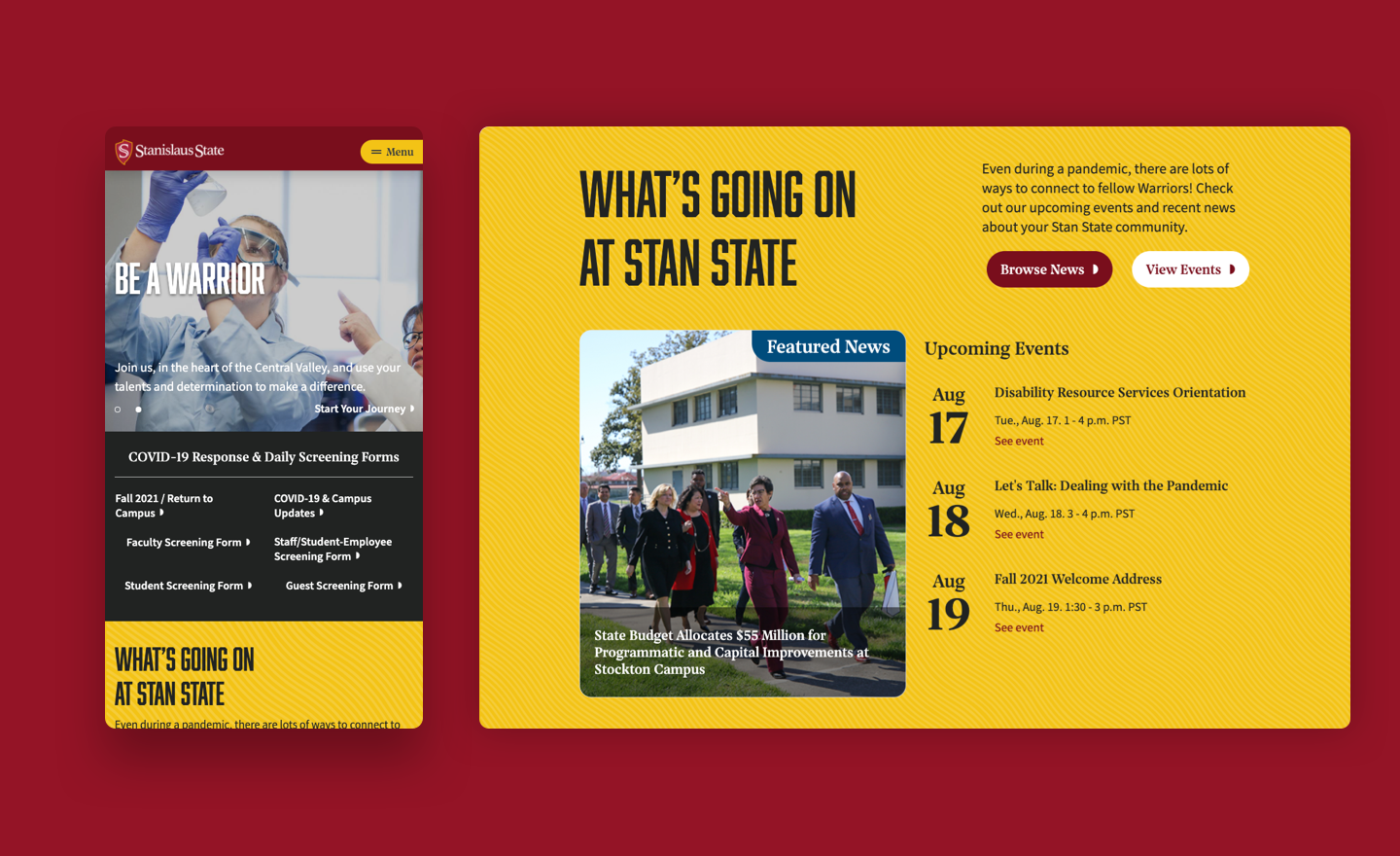3 Questions to Consider Before You Begin a Multi-Site Web Development Project
Authored by: Bjorn Thomson, Dave Bezuidenhout and C.J. Pagtakhan.
Organizations with complex needs and/or structures often leverage multiple websites to support their business objectives. Sometimes this is the result of careful planning and strategic thinking. And sometimes it’s because individual business units took it upon themselves to create a site to solve their specific problems or challenges — with or without the blessing of the central marketing team.
No matter which situation you find yourself in, you may be wondering if maintaining a multi-site structure is the best course of action.
There’s no one-size-fits-all approach that’s right for every organization. But there are three primary questions you should consider to ensure the digital strategy you choose is the best option to drive your business forward.
1. Is a Multi-Site Solution Right for Your Organization?
There are valid reasons to operate multiple websites within the umbrella of your organization’s overarching brand. However, designing, developing, and maintaining a multi-site architecture is costly and complicated — and it requires careful, diligent governance. So it’s prudent to question whether or not a multi-site solution is truly best.
Maintaining multiple websites might be the right choice for you if:
- You have multiple audiences with distinctly different needs and expectations
- Your organization wants to provide user-friendly, meaningful, fresh content that’s personalized to various audience segments
- Key business units operate semi- or wholly independently from your organization’s central marketing team
- Your brand architecture contains many sub-brands, all with their own logos, design elements, and messaging strategies
- Internal users require custom functionalities, features, and tools that aren’t applicable across the board
You may be able to solve the above challenges via a single site template that’s applied to numerous navigational branches — especially if you choose a flexible, adaptable CMS like Drupal. Drupal allows you to create shared common attributes across all your pages while enabling content editors to customize content, videos, messaging, and images based on their objectives.
Or, you may decide that it’s cleaner to keep firm lines of demarcation between each site.
As part of our robust discovery and preparation process, ImageX can help you workshop every scenario and choose the architecture that’s best for your particular needs.
2. What Are the Implications of Choosing a Multi-Site System?
In the previous section, you considered the big-picture reasons why a multi-site solution might be an attractive option. But it’s also important to understand the tactical implications of making this choice. Knowing exactly what it will take to roll out and maintain multiple digital properties is crucial to setting your website project up for success.
Consider the implications of a multi-site structure in each of the following areas.
Design
Will each site need to look different or will they all share core design elements such as color schemes and font choices? What about layouts, themes, and images? How will you ensure your design is consistently on-brand so you can deliver a predictable and consistent brand experience?
The more you can templatize and systematize your design, the easier it will be to roll out a multi-site solution. The more you want to customize each site, the longer it will take — and the more it will cost.
Content
Is there a unified content strategy that will inform content creation and editing? Will every site require a unique, personalized content plan targeted to specific audience segments? Will each business create their own content based on their objectives? Do all content editors understand what it takes to develop content that’s accessible for audiences with disabilities and other needs?
Don’t wait until after your web dev project is complete to determine how your organization will create, update, and govern fresh, relevant, accessible content. Put a workable plan in place at the outset.
Integrations
How will multiple websites connect with one another and with other platforms? Will each site share a code base? The same CMS? Will they need to integrate with CRMs like Salesforce and other third-party applications?
Integrations can be challenging to manage even in a single-site setting. Therefore, be sure to think through the ramifications of integrating multiple sites with all your tools, platforms, and channels.
Functionality/Capabilities
What do internal stakeholders and end users need to accomplish on each site? Will some sites need to offer eCommerce capabilities? Do you need to build an AI-powered chatbot or offer other self-service options? Will these be the same across all sites or will they be different?
It’s common to see sites overrun by one-off modules, plugins, and workflows that were put in place to try to make every stakeholder happy. This ad-hoc approach to meeting your organization’s needs is typically untenable and unsustainable. ImageX can help you develop a shared set of common functionalities that give stakeholders what they need without accruing technical debt, launching unsecured features, and contributing to sluggish performance.
Security
How will you keep multiple websites secure? What roles and permissions will you put in place to ensure users don’t access site elements they shouldn’t? How will you manage multiple logins and single sign-on (SSO) requests?
With cyberattacks and data breaches on the rise, website security is more important than ever. It stands to reason that keeping one website secure is generally easier than keeping multiple sites secure. If you choose a multi-site option, it’s essential to think about how you’ll keep them all safe. Working with a web dev partner who knows what it takes to build a secure system is a good place to start.

3. Do You Have the Resources to Maintain a Multi-Site Solution?
Owning multiple digital properties creates numerous practical challenges — both when you build your websites initially and as you maintain them over time.
That’s why it’s essential to take an honest look at your organization’s resources to determine you have what it takes to support your digital strategy.
Budget
When it comes to building, designing, and maintaining multiple websites, cost is a significant consideration. You may discover that internal stakeholders have taken advantage of WYSIWYG platforms like Wix, WordPress, and Squarespace to develop their own solutions. Maintaining multiple sites on multiple platforms is typically not ideal, especially if each platform comes with a licensing fee and charges you anytime you request updates or new functionality.
Migrating to a Drupal-powered solution is one way to control ongoing operational costs. That’s true whether you maintain a multi-site structure, streamline your structure into fewer sites, or create a robust, single-site strategy.
True, there will be an initial significant investment, which will depend on the level of development, design, and architecture required. But long term, Drupal is free to use — and it’s limitless in terms of its ability to grow with your business. That means you won’t outgrow it. It can evolve and scale with you.
It’s helpful to have the perspective of a business analyst (BA) as you look at the cost of your project. Business analysts are uniquely equipped to take a holistic view of your business and help you think through every nuance of resourcing and mapping out your project.
A business analyst can also help you make decisions about your website project that keep you within scope and make the most of your budget. ImageX assigns a BA to every web development project we work on.
People
It’s also vital to think about your people’s capabilities. Will employees have the bandwidth and the expertise to keep all your sites running optimally over time? Can you train them to create content that stays within your brand’s guidelines? Do you have internal support to manage the technical complexities of your site’s maintenance and governance?
Long after your web project launches, a partner like ImageX can help keep all your digital properties running smoothly. Whether through a service level agreement or staff augmentation, we can help you with the ongoing challenges of managing a multi-site structure.
ImageX Offers Multi-Site Expertise Combined With Excellent, Client-Focused Service
A website redesign, refresh, or rebuild is a good time to revisit the multi-site conundrum and ensure your architecture is designed to support your goals. And since multi-site solutions add layers of complexity to an already complicated process, it’s vital to work with an experienced web development partner who knows all the factors and nuances to consider.
ImageX can help you think through the best way to leverage Drupal’s flexibility, adaptability, and scalability to create a multi-faceted and multi-functional solution you can manage long-term.
We’ve worked with numerous organizations to build multi-site solutions that meet their needs. We’d love to help you, too. So let’s talk.
See our multi-site work:







